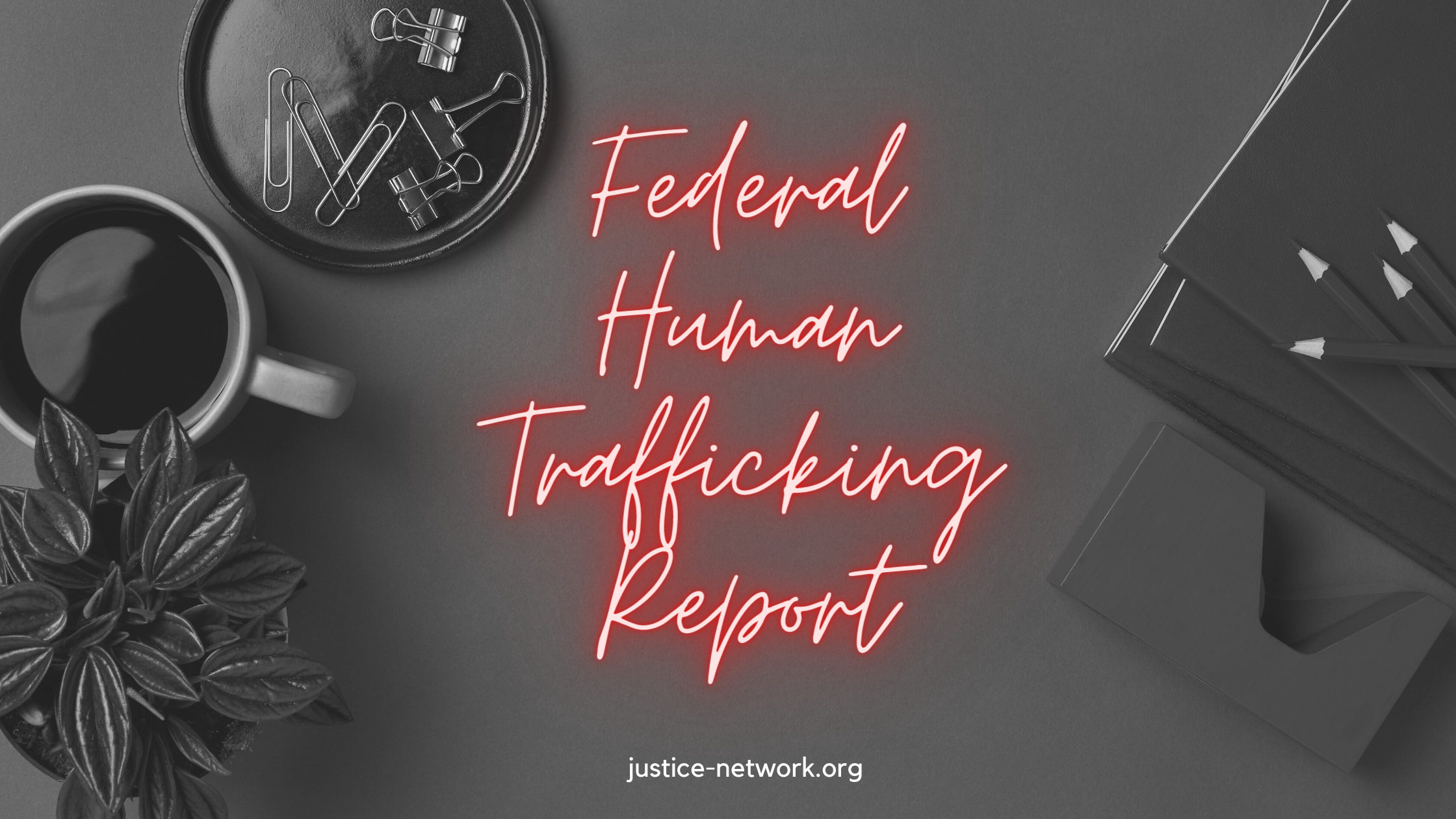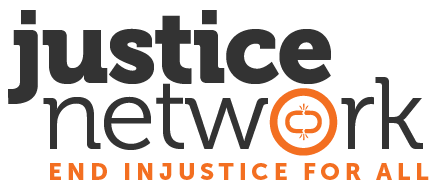
The Federal Human Trafficking Report was released earlier in the year and we almost missed seeing the information. The TIP report highlighted much of it. The actual Federal report and its information may be insightful for those interested in the justice system and want to know more insights within the US involving human trafficking (both sex and labor trafficking).
This post is mainly going to be a list of new statistics:
- There has been a 14.7% decline in new human trafficking cases.
- Domestic work, restaurant, and farm work were top industries for labor trafficking.
- There are 31 active cases of forced labor using coercion (threats of deportation, withholding immigration documents, and using language barriers against victims).
- 575 active sex trafficking cases mostly through online buyers. A third of defendants were controlled without use of violence. Most were trafficked through usage of withholding pay, physical abuse, or threats of physical abuse.
- Just over half of the victims were children targeted mainly through drug and substance dependency, being runaways, or having irregular immigration status.
- 145 new cases were made
- There were 339 new convictions
- There were 271 new defendants
- 143 months prison sentence on average
- 27 months to resolve charges on average
- 59.6% new human trafficking cases in 94 federal districts charged at least one defendant under the Trafficking Victims Protection Act
- A 21% increase of forced labor federal court convicted cases occurred, 93.3% had sentencing of 42 to 336 months.
- 93.5% of convicted defendants were sentenced to 1 month to life in prison for sex trafficking cases, with 39.9% of court ordered mandatory restitution given to victims.
- Prosecutions declined for the second year, while civil human trafficking suits rose by 125.6%. This is due to a spike in sex trafficking cases.
- Out of criminal defendants in human trafficking, 79.4% were male, 20.6% were female. All buyer defendants were male. In labor trafficking cases, 41.5% were female, 58.5% male. In sex trafficking cases, 19.2% were female, 80.8% were male.
- The youngest defendant was 18, the oldest 80, and the average age is 35.
- Entity defendants in new civil human trafficking suits included 125 hotels, 16 technology companies, government contractors, and 10 educational or research institutes.
- 246 civil plaintiffs were sued in federal court (74.4% sex trafficking, 25.6% forced labor).
- Out of 1,592 victims who had primary cases, 8.2% were victims in forced labor, while 91.8% were sex trafficking victims. 2.1% males were in sex trafficking cases. In forced labor cases 50.6% were male, and 49.4% female.
- Out of all the victims involved in federal cases, 47.9% were adults, 52.1% were children. In sex trafficking cases 55.4% were children, while 44.6% were adults. In forced labor cases, 15.4% were children, 84.6% were adults.
- Many people who have survived human trafficking within the federal cases had previously been vulnerable with one or more of the following: Drug dependence or substance abuse, being runaways, having irregular immigration status, being homeless, previously were trafficking, were in the foster care system, or had child abuse or neglect.
- In the cases reviewed, victims came from 24 countries in addition to the US.
- Traffickers in sex trafficking are often called “pimps”. 67.5% of sex trafficking cases involved those who coerced victims for sexual exploitative purposes. 4.5% were gang directed and 3.5% were directed by organized crime situations. The cases were unable to go to 100% due to multiple types of enterprises mixing them all together.
- In regards to criminal sex trafficking cases having recruitment purposes, 36.6% of victims were preyed upon through online situations, 23.3% were in pre-existing relationships, 19.7% were offered jobs that were fraudulent, 8.4% were found off the street, and 2.1% were offered shelter before trafficked.
- Violence is intertwined with human trafficking situations on a regular basis. In all the criminal sex trafficking cases, 29.1% were nonviolent while 64.1% had an overlap of sometimes violent and nonviolent, while 6.8% were full on violent. The overlap explains that threats were usually put in place and punishments for those who didn’t do what they were told were sometimes harmed.
- Coercion leads most sex trafficking victims into being trafficked. Out of 398 active cases, many of these types of coercion were used, often several in one shot. Here are the ways that they were coerced into their exploitation. 72.9% withheld pay, 59% involved physical abuse, 43.7% used threats of physical abuse, 39.9% used substance dependence, 27.1% used sexual violence, 24.6% used physical isolation, 22.6% used verbal or emotional abuse, 21.3% involved weapon use to threaten, 5.3% used actual cells, cages, or locked rooms.
- The number one way that adult victims are coerced is through physical abuse. With child victims it was withholding pay.
- Involving criminal solicitation of buyers in criminal sex trafficking methods, 83.7% used the internet, 5.6% used the street “track”, 4.7% used ways that are varied, 2.4% used brothels, 1.9% were in existing relationships, 1.7% used massage parlors.
- Hotels are a major source of criminal activity for sex trafficking and sexual exploitation. Criminal cases included 68 small/non-chain hotels, 28 were at Motel 6, 24 were from Super 8 Motels, 18 were at Days Inn, and 16 from Red Roof Inn.
- Labor trafficking cases including industries that were active included 32.1% domestic work, 17.9% Restaurant or food industries, 17.9% agricultural, 14.3% various types, 7.1% bars/clubs, 7.1% construction, and 3.6% forced panhandling. The highest methods used to recruit these victims were through fraudulent job offers 39.3%, 27.7% fraudulent drug rehab programs, 26.8% pre-existing relationships.
- In labor trafficking there is the use of violence to control workers. 24.1% of victims stated there was no violence involved, 72.4% stated they had a mixture of violent and non-violent situations, and 3.4%. are violent. These coercive means were with withholding pay 69%, physical isolation 65.5%, threats of physical abuse 62.1%, physical abuse 51.7%, and verbal or emotional abuse 48.3%.
- Foreign Nationals who are targeted by traffickers often are coerced through means such as threats of deportation 44.8%, withholding immigration documents 44.8%, and 17.2% were exploitative through language barriers.
- Many investigation agencies work towards seeking freedom for those who are put through human trafficking. 71.6% were rescued through operations by the FBI, 25.5% through HSI, and 2.9% other. 77.7% of child-only sex trafficking case rescues are rescued through the FBI, 21.1% HSI, 57.8% of adult sex trafficking cases were found through FBI, 36.1% HSI, and of forced labor cases, 48.1% through the FBI, 44.4% through HSI.
- In regards to human trafficking cases resolved through criminal appeals, 56.3% were affirmed, 28.2% were dismissed, 9.9% affirmed in part but reserved in part, and 5.6% are reserved. The average length of the resolution for criminal defendants found guilty after trial is 40 months. All defendant is 27 months, and defendants who plead guilty were 26 months.
